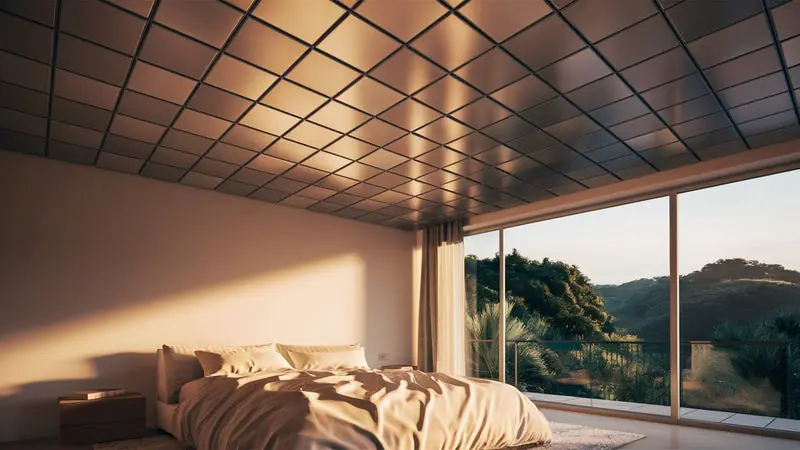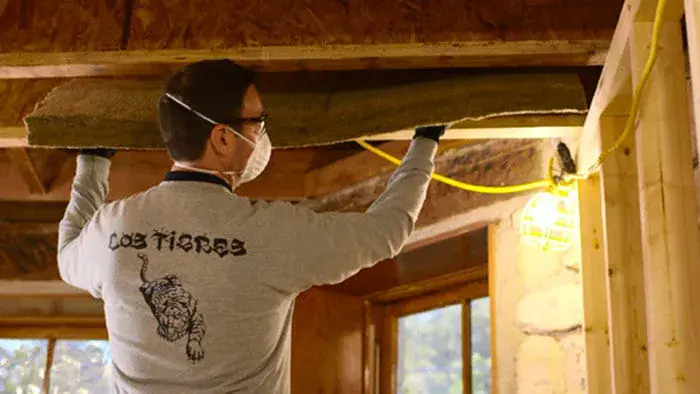Noise from upstairs neighbors, footsteps, or even plumbing can disrupt the comfort of your living space. For homeowners and renters alike, soundproofing a ceiling is one of the most effective solutions to create a quieter environment. Whether you want to reduce impact noise from above or block airborne sounds like voices and music, the right ceiling soundproofing techniques can make a significant difference.
This guide explores practical strategies, materials, and professional tips to help you understand how to soundproof a ceiling effectively.
Why Soundproofing a Ceiling Matters
Unwanted noise affects more than just comfort. It can impact productivity, sleep quality, and even stress levels. By investing in ceiling soundproofing, you:
- Reduce disturbances from upstairs activity.
- Improve privacy by blocking sound transmission.
- Enhance the overall value of your property.
- Create a more peaceful and relaxing living environment.
Whether you live in an apartment, condo, or multi-level home, soundproofing your ceiling is an investment in comfort and peace of mind.
Understanding How Sound Travels Through Ceilings
Before exploring solutions, it helps to understand how noise passes through ceilings. There are two main types of noise:
- Airborne noise: Conversations, TV sounds, or music. These vibrations move through the air and into your ceiling.
- Impact noise: Footsteps, furniture movement, or dropped objects. This type of sound travels through the structure itself.

An effective ceiling soundproofing project should address both types of noise for best results.
Best Methods for Soundproofing a Ceiling
1. Add Mass with Drywall
One of the simplest and most effective methods is increasing ceiling mass. Adding an extra layer of drywall helps block airborne noise.
- Use thicker drywall sheets for maximum results.
- Combine with a soundproofing compound like Green Glue between layers for enhanced absorption.

This approach reduces vibrations and prevents sound from easily passing through.
2. Install Acoustic Panels or Ceiling Tiles
Acoustic ceiling panels and tiles are designed to absorb sound waves. They are ideal for reducing echo and controlling airborne noise.
- Available in various designs to match interior decor.
- Easy to install and replace when needed.
- Particularly useful for home offices, studios, or entertainment rooms.

3. Use Resilient Channels or Sound Isolation Clips
Resilient channels and sound isolation clips create a gap between the ceiling structure and the drywall. This “decoupling” technique prevents vibrations from traveling directly through the ceiling.
- Effective for reducing both airborne and impact noise.
- Works best when combined with insulation and multiple drywall layers.
- Requires professional installation for maximum efficiency.
4. Add Acoustic Insulation Between Joists
Insulating the ceiling cavity helps absorb noise before it transfers into the room below. Acoustic insulation is denser than regular thermal insulation, making it better for soundproofing.

Common options include:
- Mineral wool insulation.
- Fiberglass batts.
- Rockwool soundproofing boards.
This method is especially effective when paired with resilient channels and drywall.
5. Install a Drop Ceiling with Soundproof Tiles
A suspended or drop ceiling adds an extra barrier that reduces sound transfer. By placing soundproof ceiling tiles within the grid, you can achieve noticeable noise reduction.
- Works best in basements or offices.
- Can hide electrical wiring and ductwork.
- Less effective for impact noise without additional insulation.
6. Seal Gaps and Cracks
Even the best soundproofing system will fail if gaps remain unsealed. Sound travels easily through small openings, so sealing is crucial.
- Use acoustic caulk to fill cracks along ceiling edges.
- Seal around light fixtures, vents, and electrical boxes.
- Consider installing soundproof putty pads around outlets for added protection.
7. Use Carpets and Rugs Upstairs
While technically not a ceiling modification, adding rugs or carpets on the floor above significantly reduces impact noise. This affordable solution is especially helpful in apartments with hardwood or tile floors.
Budget-Friendly Ceiling Soundproofing Tips
Not every project requires a major renovation. Here are some cost-effective approaches:
- Add heavy curtains or tapestries on walls to reduce echo.
- Apply peel-and-stick acoustic panels for a quick solution.
- Rearrange furniture to absorb sound more effectively.
- Use area rugs upstairs for impact noise reduction.
These options are affordable, easy to implement, and still offer noticeable improvements.
Professional vs DIY Ceiling Soundproofing
When deciding between DIY and professional soundproofing, consider these factors:
DIY Approach
- Lower upfront cost.
- Good for small fixes like sealing gaps or adding rugs.
- Requires time, tools, and basic construction skills.
Professional Installation
- Higher cost but longer-lasting results.
- Access to advanced materials like isolation clips and acoustic drywall.
- Guaranteed expertise in dealing with structural noise challenges.
Choosing the Right Soundproofing Materials
Not all soundproofing products are equal. Look for materials designed specifically for noise reduction:
- Mass loaded vinyl (MLV): A dense, flexible barrier for blocking sound.
- Acoustic foam panels: Best for absorbing echoes and improving room acoustics.
- Green Glue compound: Effective for damping vibrations between drywall layers.
- Rockwool insulation: Excellent for both thermal and acoustic performance.
Selecting the right combination ensures both airborne and impact noise are minimized.
Conclusion: Create a Quieter Space with Ceiling Soundproofing
Soundproofing your ceiling is one of the most effective ways to block unwanted noise and improve comfort at home. From adding drywall and insulation to using resilient channels and acoustic panels, there are solutions for every budget and noise problem.
By taking the time to evaluate your noise challenges and applying the right materials, you can significantly reduce sound transmission. If you need a lasting, professional solution, consider hiring a contractor experienced in ceiling soundproofing.
Ready to transform your space? Start small with DIY sealing and insulation, or invest in a full ceiling soundproofing system for maximum peace and quiet.

